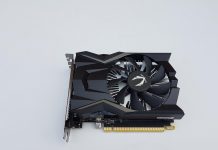Good Budget Option?
Review Summary
With its superb performance, excellent thermals, decent overclocking on the core clock but better overclocking on the memory, and competitive pricing, I see no reason why a gamer who is in the market looking for a graphics card that would allow him/her to game at 1080p and 1440p using high to ultra graphics quality settings without any hiccup, would not pick up the Gigabyte GeForce RTX 2060 WINDFORCE 3X Gaming Pro OC 6G. After all, we have Turing on the budget in our reach now.
Overall
-
Value - 8.5/10
8.5/10
-
Performance - 9/10
9/10
-
Overclocking - 8/10
8/10
-
Design - 8.5/10
8.5/10
Pros
- Budget-friendly
- Great Performance
- Overclocking
- RGB
Cons
- Nothing significant
NVIDIA extends its Turing architecture with the budget-friendly RTX 2060, leveraging a modified TU106 chip. Boasting 1920 CUDA Cores, 240 Tensor Cores, and 30 RT Cores, it targets 1080p gaming while performing well at 1440p.
Priced at $349, it competes favorably with the RTX 2070, offering a balance of affordability and performance. Gigabyte’s RTX 2060 Pro, an overclocked variant, achieves a boost clock of 1830MHz, featuring WINDFORCE 3X cooling, RGB illumination, and silent operation under load. Despite lacking USB C and NVLink support, it stands out as a compelling option for its price point.
Key Takeaways
- The GeForce RTX 2060 Gaming Pro OC 6G combines budget-friendly pricing with high-performance features, featuring 6GB GDDR6 VRAM and factory overclocking.
- The ASRock’s B650E PG-ITX WIFI motherboard is perfect for Gamers and content creators seeking an optimal balance between performance and affordability.
- Users on a strict budget or solely focused on top-tier 4K gaming and those demanding the latest cutting-edge technology might opt for higher-end models than the GeForce RTX 2060 Gaming Pro OC 6G
- Why you can trust Tech4Gamers: Our reviews are based on dedicated hands-on testing by our team of experienced hardware experts. Find out more about how we test. [/su_list]
Starting the review, let’s look at the specifications:
| Graphics Processing | GeForce RTX™ 2060 |
|---|---|
| Core Clock | 1830 MHz (Reference Card: 1680 MHz) |
| RTX-OPS | 39 |
| CUDA® Cores | 1920 |
| Memory Clock | 14000 MHz |
| Memory Size | 6 GB |
| Memory Type | GDDR6 |
| Memory Bus | 192 bit |
| Card Bus | PCI-E 3.0 x 16 |
| Digital max resolution | 7680x4320 |
| Multi-view | 4 |
| Card size | L=280.35 W=116.45 H=40.24 mm |
| DirectX | 12 |
| PCB Form | ATX |
| OpenGL | 4.6 |
| Recommended PSU | 500W |
| Power Connectors | 8 Pin*1 |
| Output | DisplayPort 1.4 *3 HDMI 2.0b *1 |
| SLI Support | No |
| Accessories | 1. Quick guide 2. Driver CD |
Packaging and Unboxing
Closer Look
The Gigabyte GeForce RTX 2060 Gaming Pro OC is among the top-tier graphics solutions in this category from the Gigabyte (Non-Aorus). This card features 6GB GDDR6 VRAM from Micron. This is the first time I have seen a Micron chip overclocking that well, in my experience.
More on it later in the section. This card packs 1920 shader units using 87.8 GPixel/s pixel fill rate and 219.6 GT/s texture fill rate. The card’s base clock is 1365MHz, whereas the boost clock is 1830MHz, making this card factory an overclocked one; hence, the term OC is used in the model. Memory is clocked at 7001MHz.
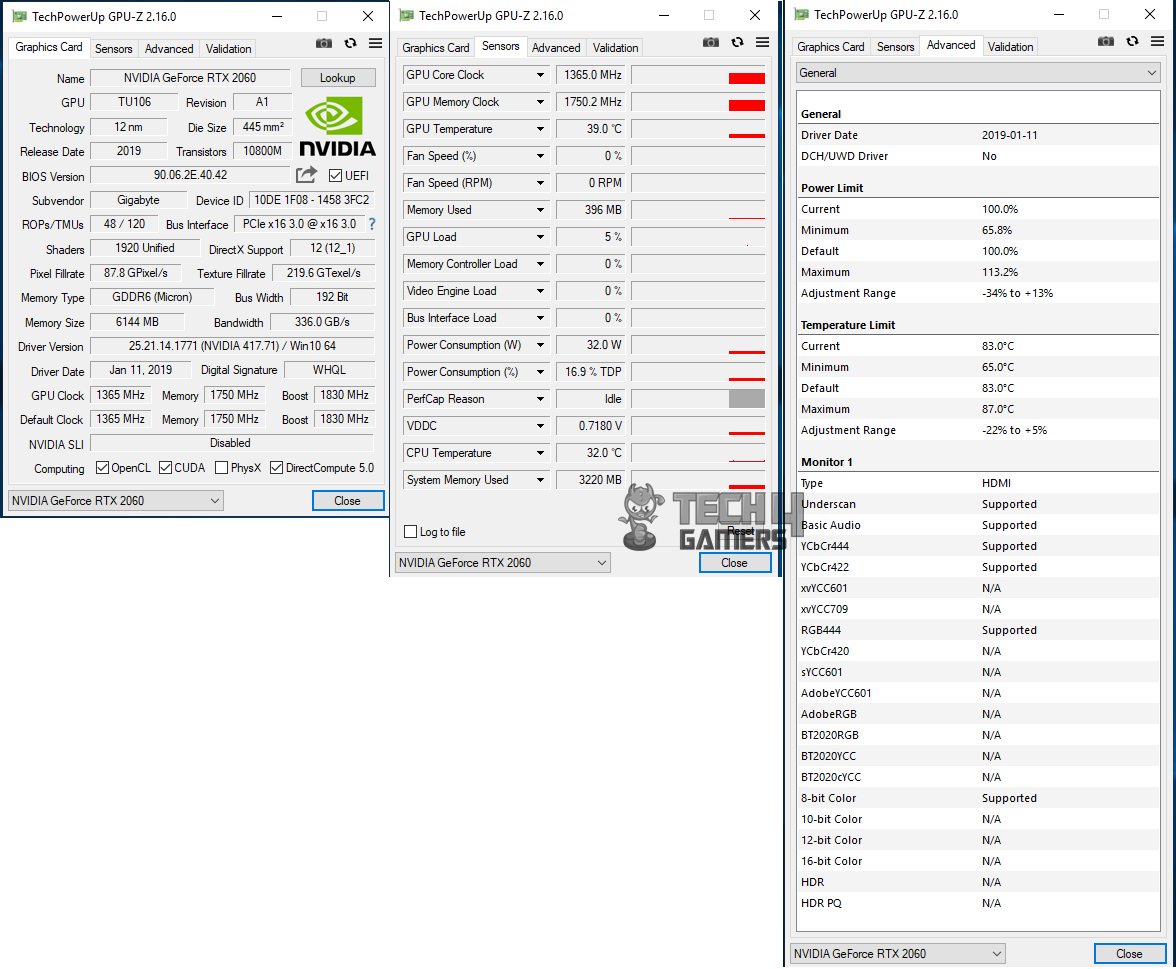
Above is the picture of GPU-Z showing the basic information of the graphics card and its sensor’s telemetry. Gigabyte has provided a maximum power limit or target of 113% with a maximum thermal limit of 87°C.
It is time to take a closer look at the design of the graphics card, and then I will discuss the results of the gaming and synthetic benchmarks. Above is a symbolic picture of the graphics card showing its main components.
The black PCB is sandwiched between the metal back plate, heatsink, and shroud. I looked at the graphics card, and let me tell you. It’s got this bold black and gray plastic shroud with cool grooves and sharp edges that give it such a stylish vibe.
The gray textures on the top and bottom add to the whole aesthetic. It’s compact, measuring 280.35×116.45×40.24mm (LxHxW) with a sleek 2-slot design.
On the top side, there’s this gray area with RGB LEDs, and using RGB Fusion 2.0, you can light up the GIGABYTE text and GeForce RTX logo. They didn’t cover the entire card on one side, I guess, for heat dissipation. Oh, this black power connector is juicing up those vibrant RGB LEDs. It’s a real eye-catcher!
The PCIe connector can be seen at the base of the graphics card. One can spot white color thermal pads being used between the copper cold plate and the heatsink.
A black fan power connector is located towards the rightmost side of the PCB. The heatsink portion towards the rear IO section is making no contact with the PCB as there is a gap between both, which is understandable as the critical areas are already well covered.
Gigabyte uses a solid metallic backplate on the back side of the PCB to add more strength to the overall design and also to serve to improve the aesthetics of the card. GIGABYTE in white text is printed in the center of the plate.
There is no warranty void sticker pasted on any of the four GPU spring-loaded screws. A serial no sticker is pasted towards the power connector side. There is no NVLink connector on the PCB.
The graphics card employs a single 8-pin power connector, although the PCB suggests support for two connectors. This design choice hints at potential use in higher-end RTX 2070 models requiring dual 8-pin connections.
The shroud features carbon fiber-like finishing at both ends, creating a sleek appearance, while large cutouts ensure efficient heat dissipation. The shroud extends over the PCB, enhancing the card’s overall design coherence.
The above picture better shows what I have stated above, that the shroud has extended over the PCB. One can see the 4 composite heat pipes coming out of the heat sink and terminating here.
The following connectivity options are available at the user’s disposal:
- 1x HDMI port 2.0 b
- 3x DP ports 1.4
No USB-C option is provided in the RTX 2060, NVIDIA’s imposed limitation. Due to limitations from the source, I did not open the card to look at the PCB and the power delivery system.
Testing
Following is the information regarding the test system and drivers that I have used to test this graphics card:
- Intel i7 8700k @ 5.0GHz
- Asus Strix Z390-E Gaming Motherboard
- Ballistix Elite 16GB kit @ 3000MHz
- Alphacool Hurrican Eiisturm 360 Cooling Kit
- HyperX 120GB SSD
- Seagate Barracuda 3.5” 2 TB HDD
- Thermaltake TP RGB 750W Gold PSU
Drivers:
- NVIDIA driver 417.71 for Gigabyte GeForce RTX 2060
- NVIDIA driver 411. For other RTX graphics cards
- NVIDIA driver 398.35 for GTX graphics cards
- NVIDIA driver 417.71 for GTX 1080 [Required for Battlefield V]
Monitoring Software:
MSI Afterburner 4.60 was used to monitor and record the FPS for the games without in-built benchmarks. Three runs per game per API per resolution were made, and the average is shown on the graphs. The tough ordeal for the tester!
Our testing includes Ray Tracing and DLSS as well. I will be covering the RT and DLSS in a separate section.
Synthetic Benchmarks
Gaming Benchmarks
Ray Tracing and DLSS Benchmarks
Synthetic Benchmarks
Let’s start with the synthetic benchmarks.
Gaming Benchmarks
Let’s take a look at the gaming benchmarks.
VRAM Usage Analysis
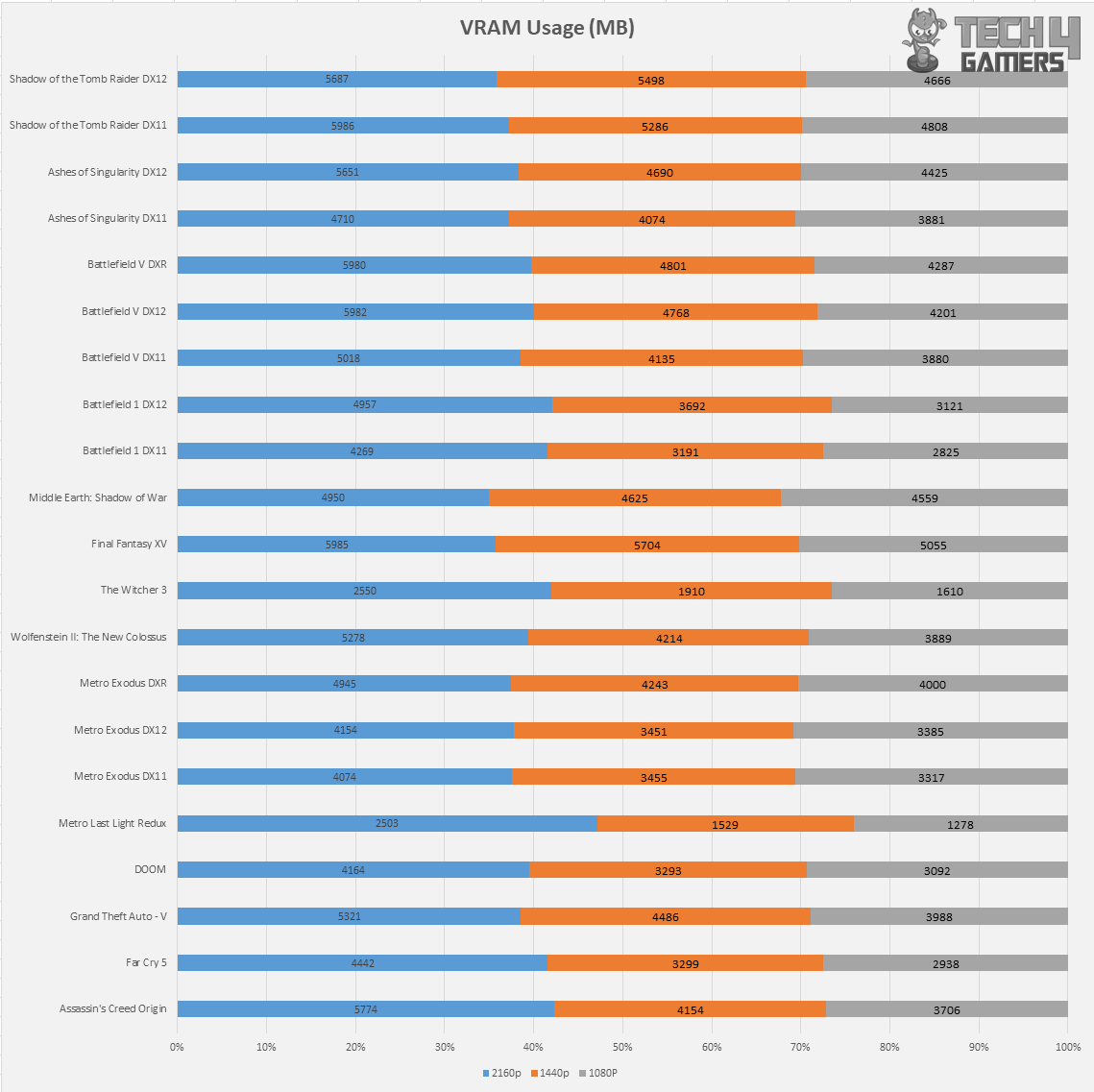
The Gigabyte GeForce RTX 2060 Gaming Pro OC, equipped with 6GB GDDR6 Micron memory running at 7001MHz, was tested to assess its performance across different resolutions.
With games becoming more demanding, the 6GB VRAM was evaluated for its adequacy at 1080p, 1440p, and 2160p resolutions, using maximum graphics settings for comprehensive analysis.
In testing, only three games—Battlefield V, Shadow of the Tomb Raider DX11, and Final Fantasy XV—exceeded the 6GB VRAM limit at 4k.
Generally, the card handles maxed-out games up to 1440p, but some titles show 5GB VRAM usage at 1080p, suggesting potential for improvement through game optimization. Detailed VRAM utilization results are provided for each resolution during testing.
Boost Clocks
Now that we have looked at the gaming and synthetic benchmark results and the VRAM analysis, it is time to look at the maximum boost clocks.
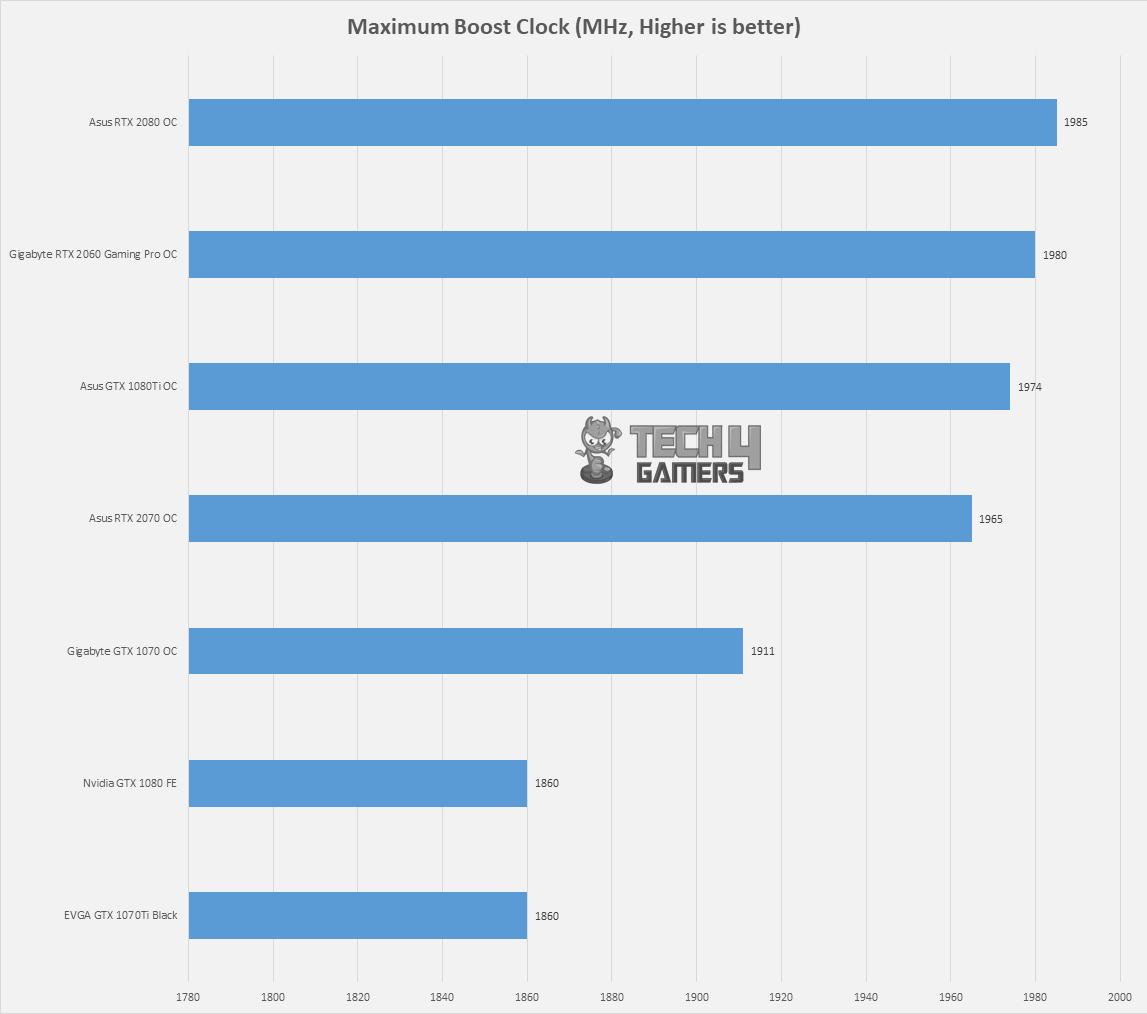
The Gigabyte GeForce RTX 2060 Gaming Pro OC has been boosted to 1980MHz out of the box without any tweaking. The sustained clocks were, on average, 1950MHz, which is quite impressive.
Overclocking and Thermals
For overclocking, the MSI Afterburner was used. I started overclocking the VRAM only without touching the voltage slider and core clock.
I could push the memory clock by another +1100MHz (1.1GHz), which is impressive as this was done without setting the voltage at 100%. However, at 1100MHz, the Unigine Superposition 1080p Extreme score gets lowered, indicating that any further overclocking attempt would be futile.
To ensure the case, the voltage was then set at 100%, and the test was repeated, but it met with the result indicating that we had reached the limit on the memory overclocking.
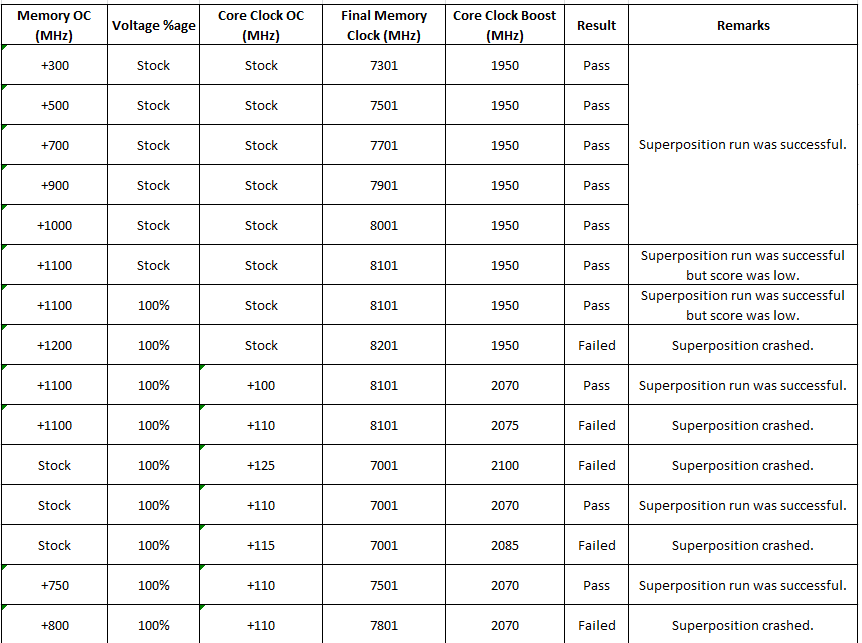
Next, I started with the core clock overclocking. I had no luck with the silicon as I could only push the core clock to +110MHz, so I had to tune down the memory overclock. +110MHz on the Core clock and +750MHz on the memory clock gave me the best score.
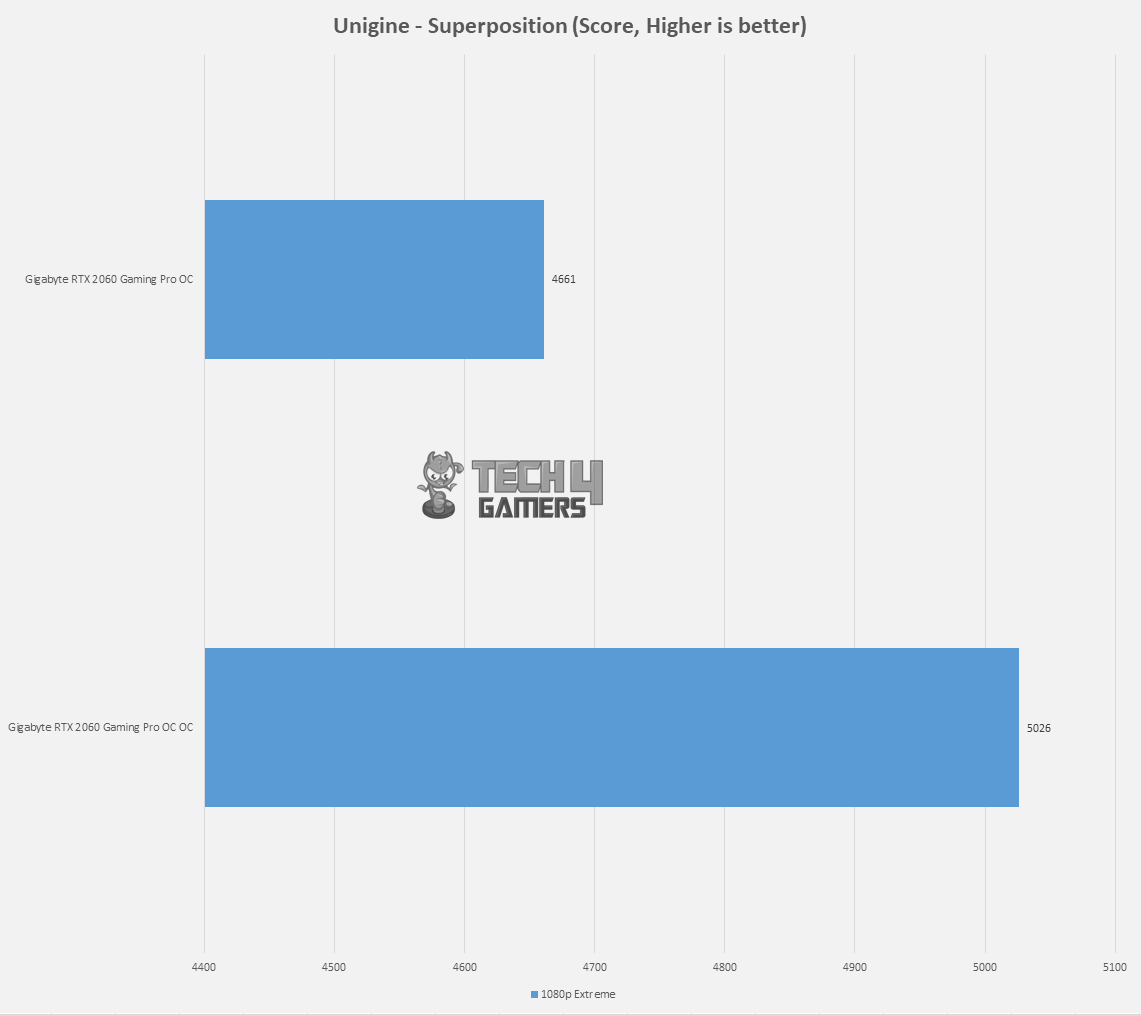
The chip did reach 2100MHz, but unfortunately, it was a failed attempt. 2070MHz is what was achieved with stable overclock.
Power Consumption
To measure the power draw, I am taking a different route as HWInfo64 shows the GPU Power, and this is exactly what I have been showing on my graphs instead of the overall system power draw.
The system was left idle for 30 minutes to monitor the idle power draw, closing as many background apps as possible.
To monitor the maximum power draw, I use The Witcher 3 4k run of 30 minutes and then record the reported power draw from the HWInfo64. This way, any user can easily check their graphics card for power consumption.
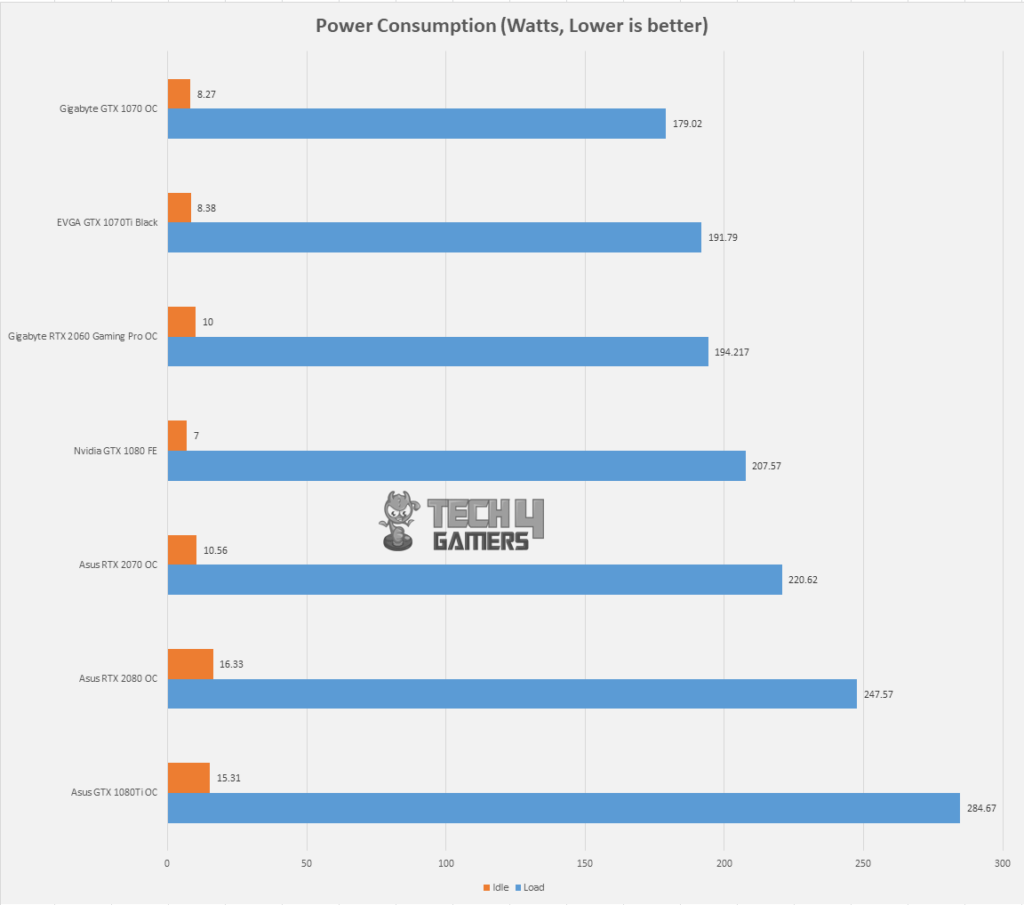
Like the other RTX graphics cards I tested, this card constantly hit the power target. Even increasing the slider to 113% saw no effect. A little more headroom in terms of power target could have been beneficial.
Thermal Performance
I am not using Furmark or any other stress app for thermal performance checking. Instead, the reported temperatures are from the gaming session using The Witcher 3 at 4k resolution for a minimum of 30 minutes.
MSI Afterburner is used to record the temperatures during the gaming session. The Gigabyte GeForce RTX 2060 Gaming Pro OC was idling at 38°C. It maxed to 66°C on stock clocks, and with overclocking, it maxed to 69°C.
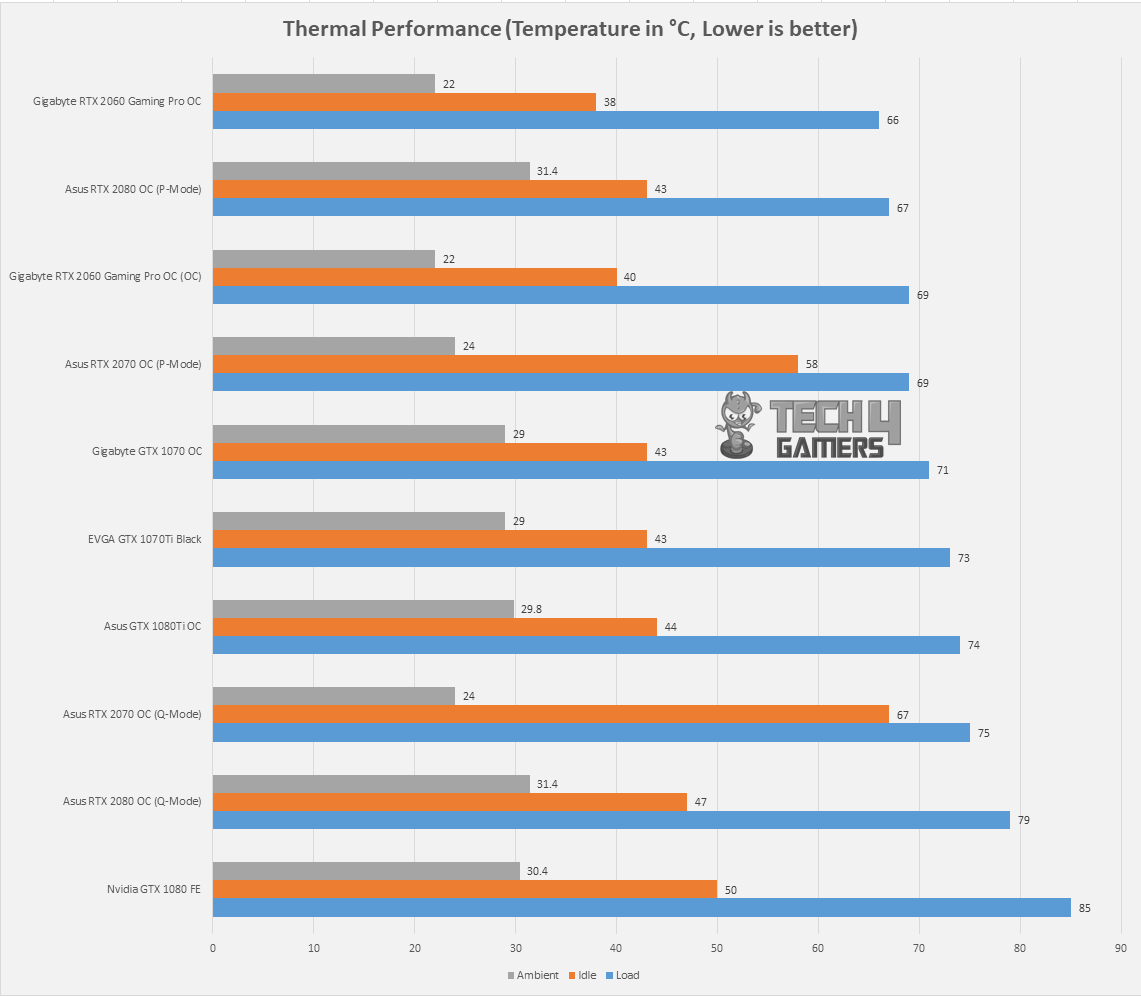
This is impressive thermal performance as the graphics card was tested inside a chassis, not on an open-air test bench.
Aorus Engine – RGB Fusion
Gigabyte has provided RGB LED lighting on their RTX 2060 Gaming Pro OC. The lighting effects could be controlled using their RGB Fusion 2.0 app. The following lighting modes are available on this graphics card:
- Cycle
- Static Color
- Flash
- Double Flash
- Breathing
Aorus Engine is the name of the utility app that can be used to monitor and manipulate the control settings of the Gigabyte graphics cards. The application has a user-friendly interface.
Should You Buy It?
I bet you’re thinking whether you should buy this GPU or not. Let me ease it up for you.
Buy It If:
✅ You seek high performance on a budget: The GeForce RTX 2060 Gaming Pro OC 6G delivers impressive gaming capabilities at an affordable price point.
✅ You are looking for a balance between cost and performance: With its 6GB GDDR6 VRAM and overclocking potential, this card suits those who want decent rendering power without breaking the bank.
✅ You value effective cooling and RGB aesthetics: The WINDFORCE 3X cooling system and RGB LEDs on the Gigabyte model ensure efficient heat dissipation and a visually appealing setup.
Don’t Buy It If
❌ You require top-tier 4k gaming: A more powerful GPU with greater VRAM might be better if your primary focus is on 4k gaming at the highest settings.
❌ You seek entry-level options with a tight budget: If you’re on a strict budget and don’t require the features and performance of the RTX 2060, there are more affordable alternatives in the market.
❌ You prefer the latest cutting-edge technology: If you are looking for the most advanced and latest GPU features, you might consider higher-end models from the RTX series for a more future-proof investment.
Conclusion
Recently got my hands on NVIDIA’s RTX 2060, specifically the Gigabyte Gaming Pro OC model – and let me tell you, it’s a budget-friendly beast. Built on the modified TU106 chip, this card packs 6GB GDDR6 VRAM and comes factory overclocked, hitting a stable 2070MHz core clock during my testing.
Gigabyte’s WINDFORCE 3X cooling and RGB LEDs add flair, keeping temperatures impressively low at 64°C in most games, even pushing the card in The Witcher 3 at 4k. It went up to 66°C, still quite impressive. Overclocking results were mixed, with a steady 2070MHz but some instability at 2100MHz.
Despite constant power limit hits, the VRAM analysis proved the 6GB on this RTX 2060 is solid for 1080p and 1440p gaming. Regarding performance, it held its own against the GTX 1080, and the gap is narrowing. I think it’s a solid choice, especially considering the pricing. Big shoutout to Gigabyte for letting me put their GeForce RTX 2060 Gaming Pro OC 6G through its paces.
Recent Updates
- January 8, 2024: A few text changes to improve readability. Also added image galleries.
Thank you! Please share your positive feedback. 🔋
How could we improve this post? Please Help us. 😔
[Editor-in-Chief]
Sajjad Hussain is the Founder and Editor-in-Chief of Tech4Gamers.com. Apart from the Tech and Gaming scene, Sajjad is a Seasonal banker who has delivered multi-million dollar projects as an IT Project Manager and works as a freelancer to provide professional services to corporate giants and emerging startups in the IT space.
Majored in Computer Science
13+ years of Experience as a PC Hardware Reviewer.
8+ years of Experience as an IT Project Manager in the Corporate Sector.
Certified in Google IT Support Specialization.
Admin of PPG, the largest local Community of gamers with 130k+ members.
Sajjad is a passionate and knowledgeable individual with many skills and experience in the tech industry and the gaming community. He is committed to providing honest, in-depth product reviews and analysis and building and maintaining a strong gaming community.


 Threads
Threads

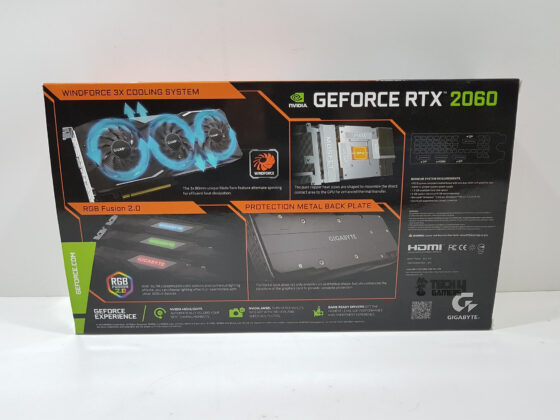
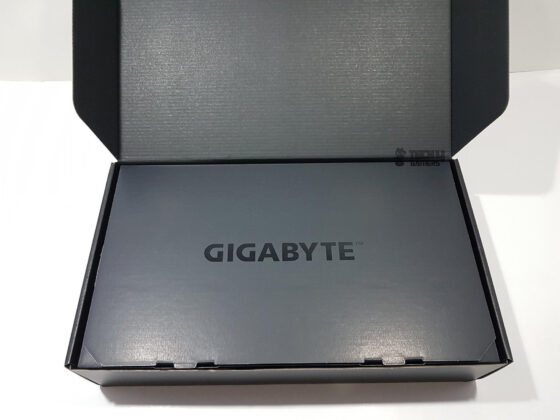

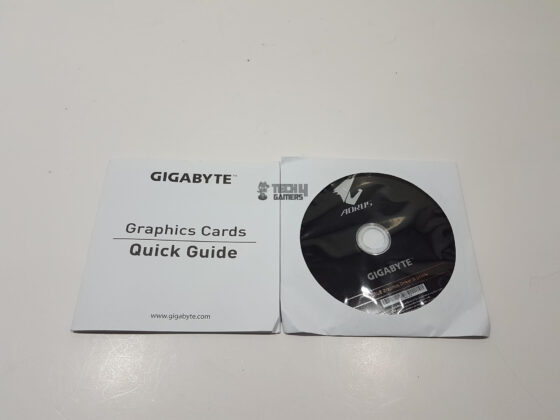
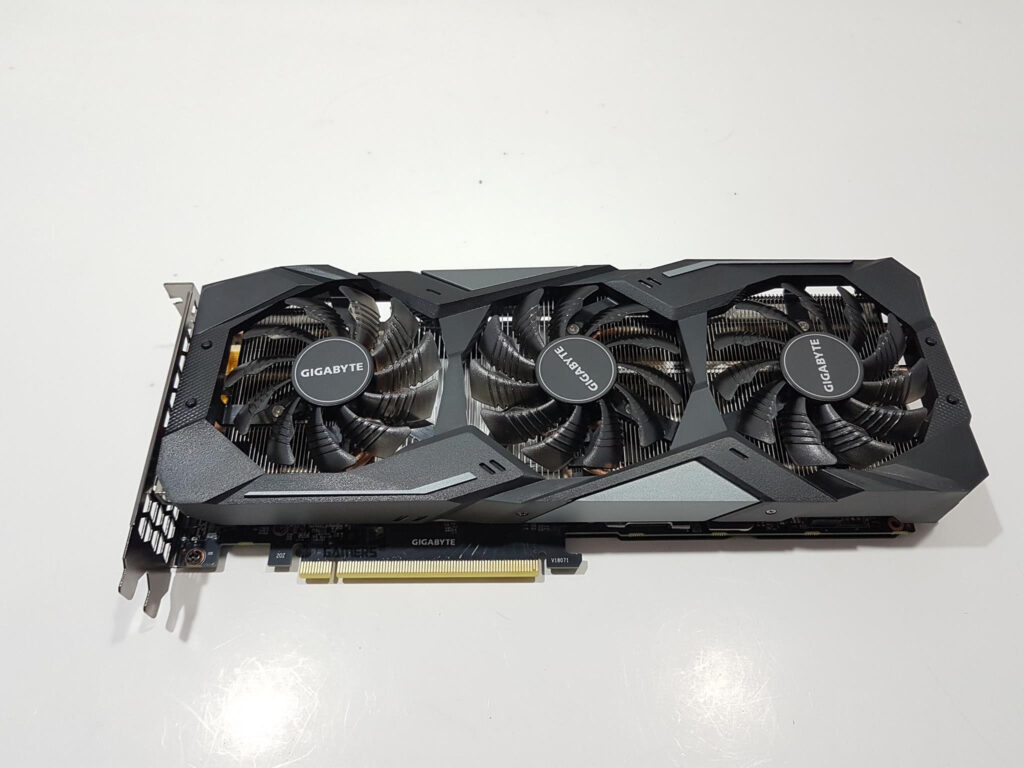
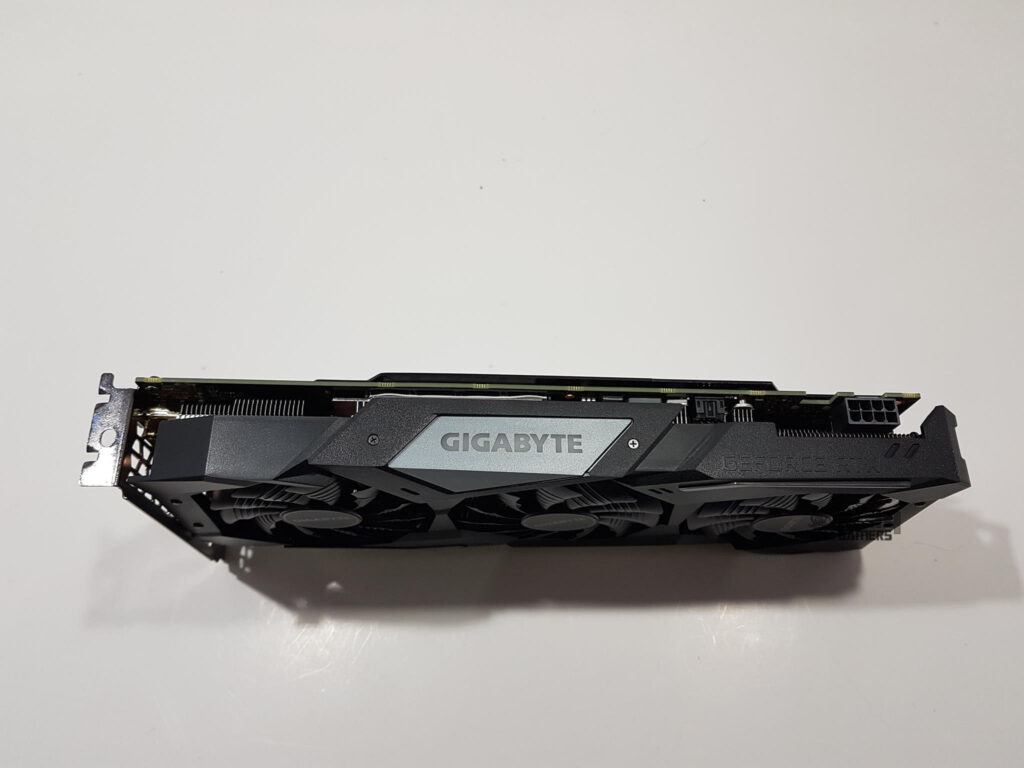
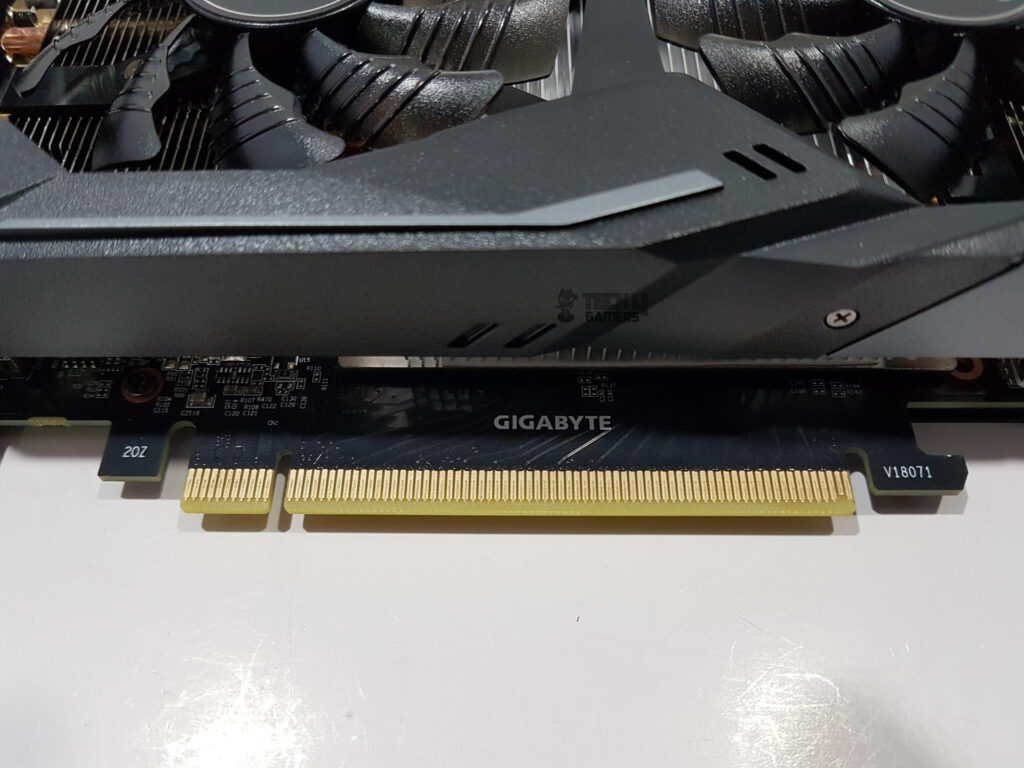
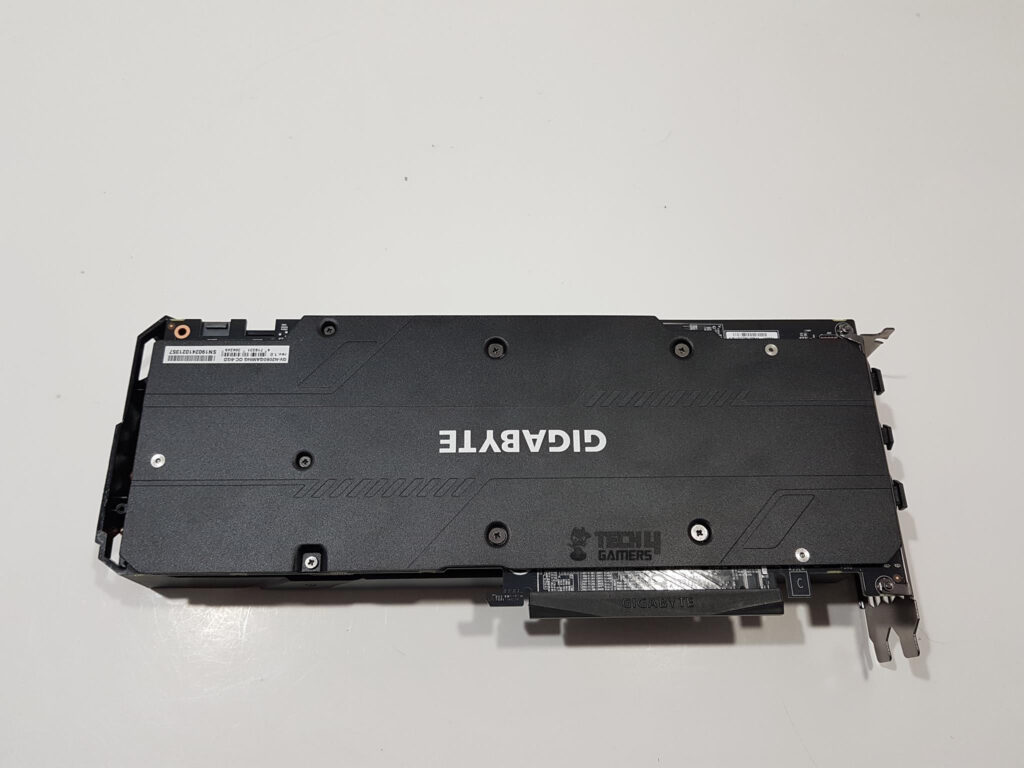
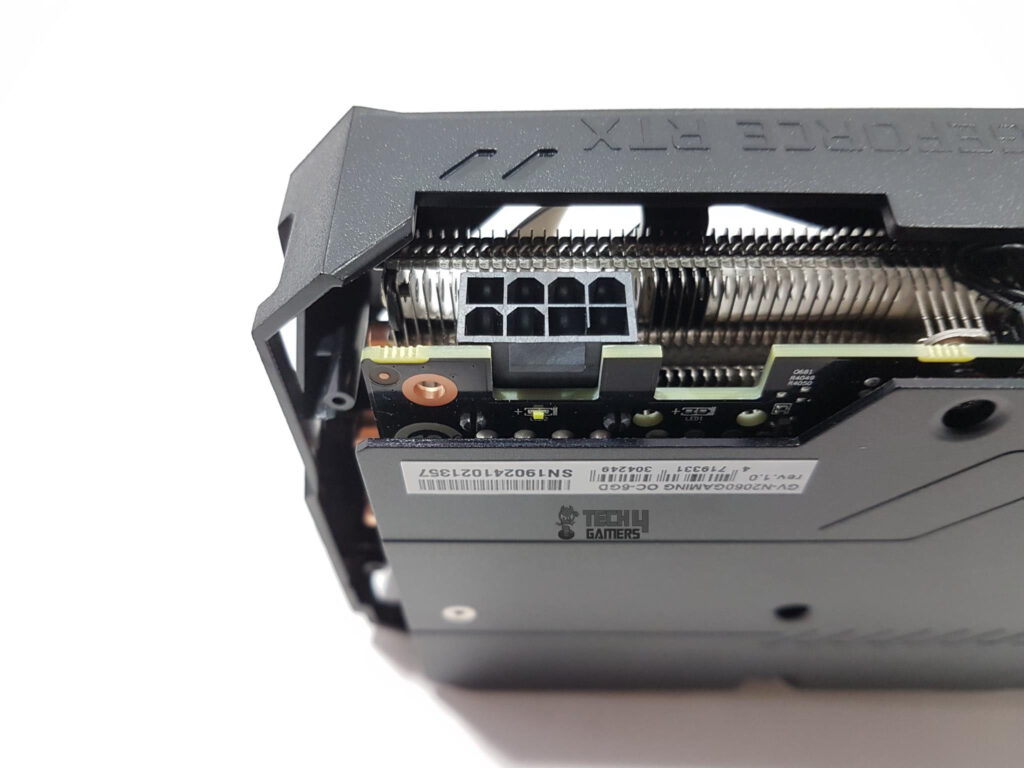
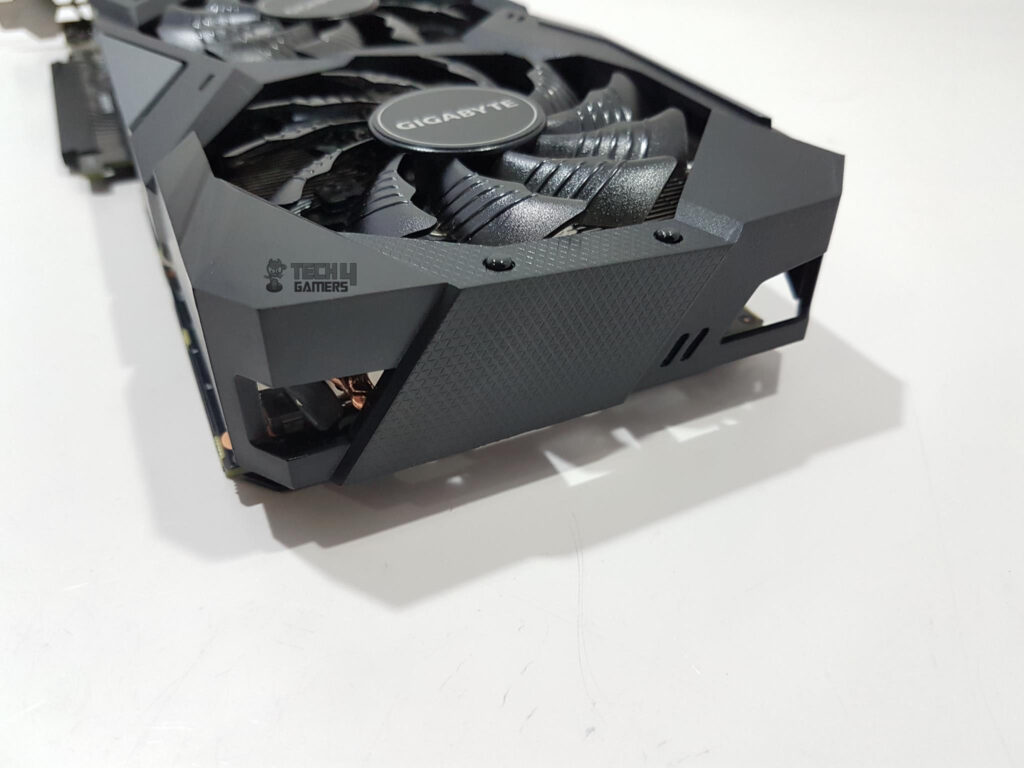
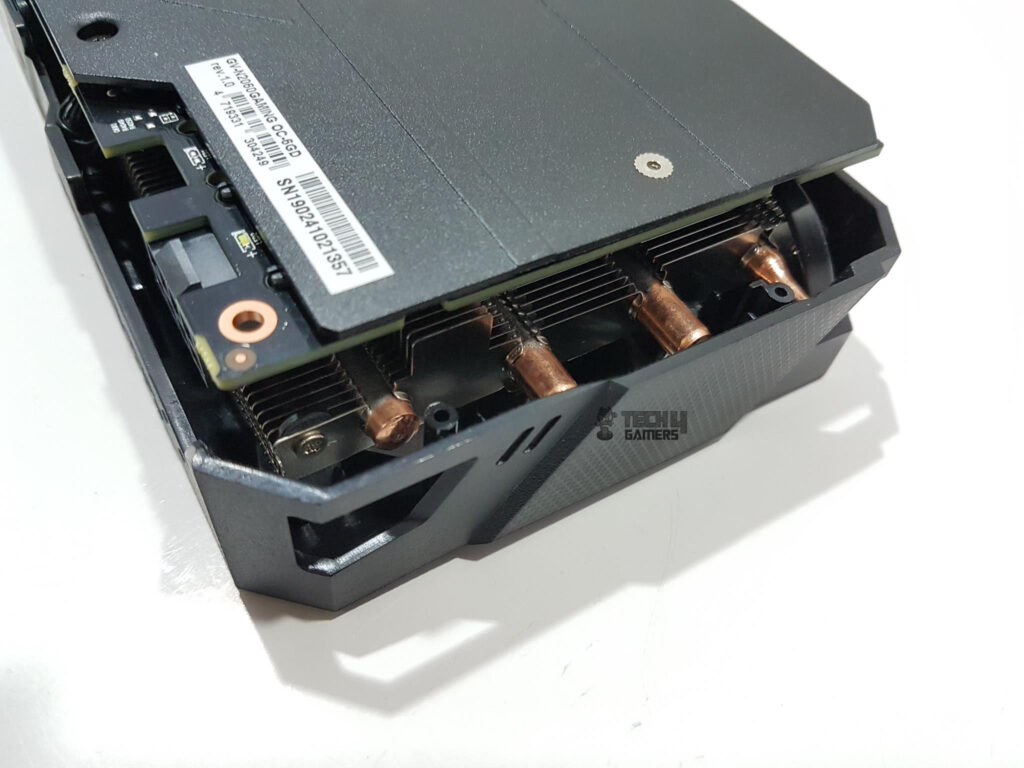
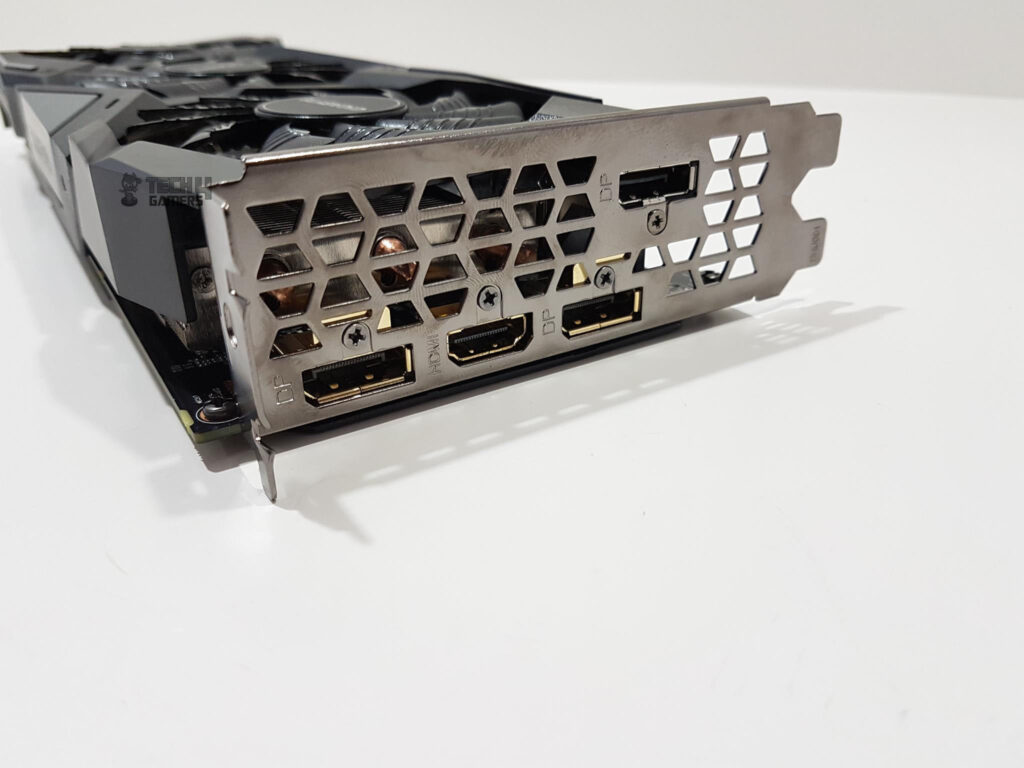
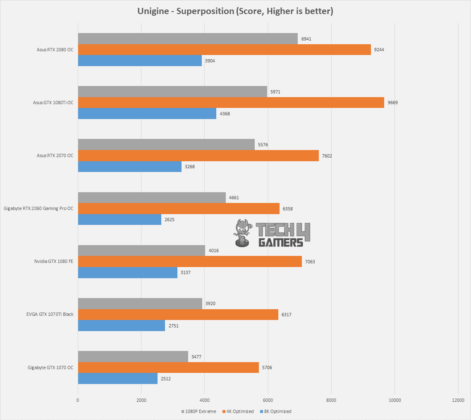
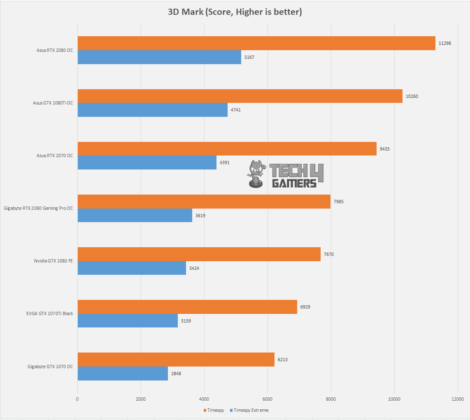
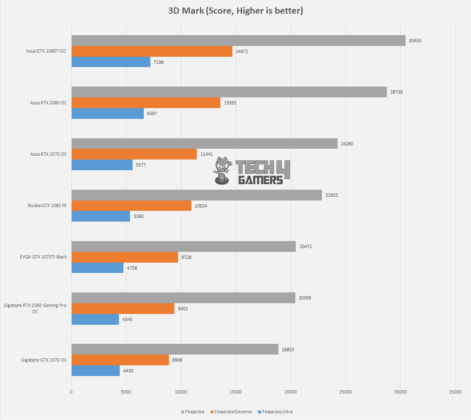
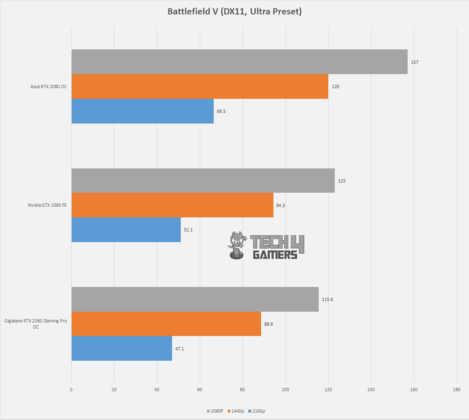
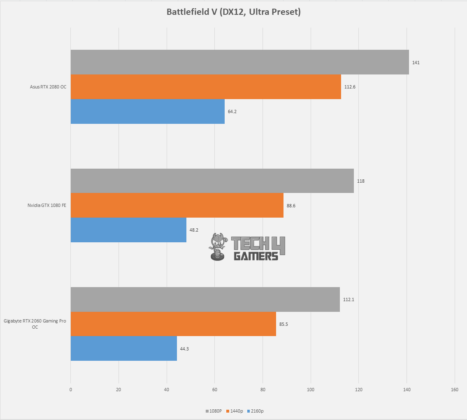
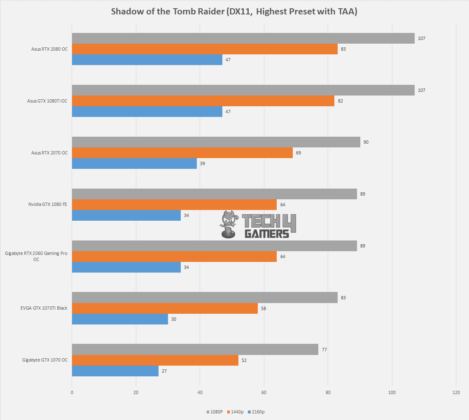
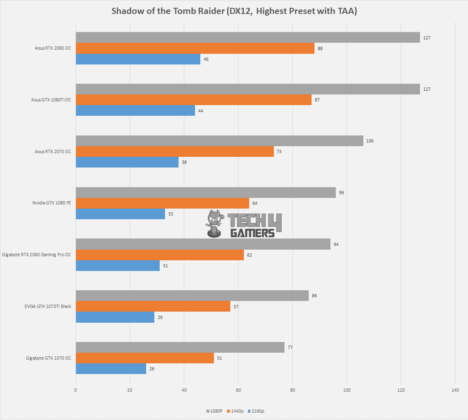
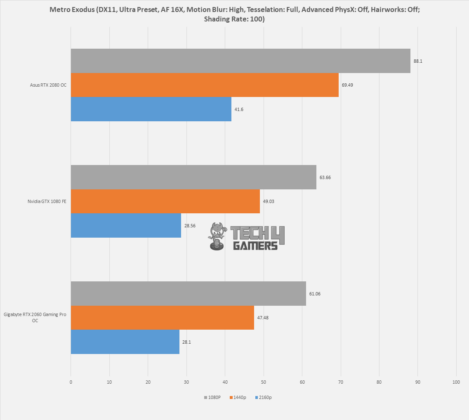
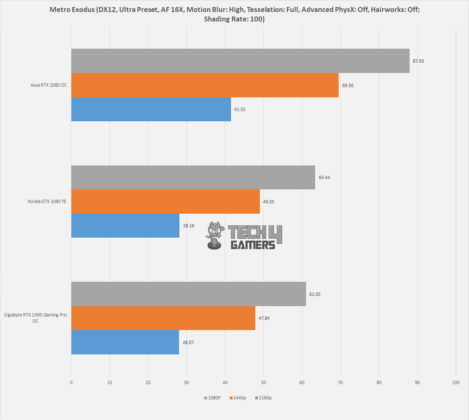
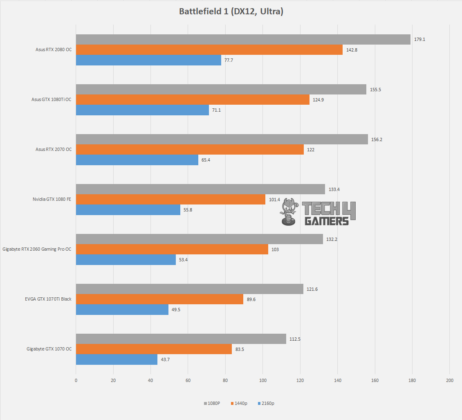
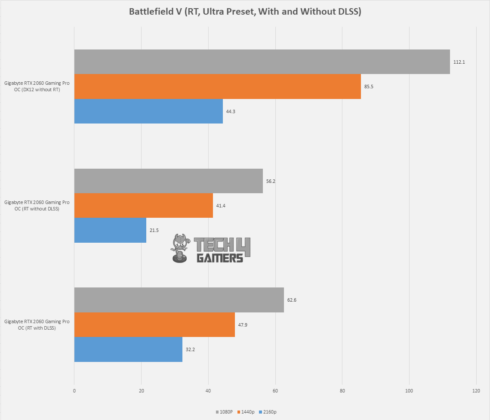
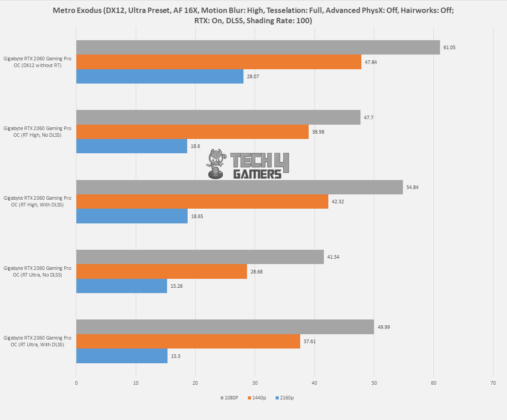
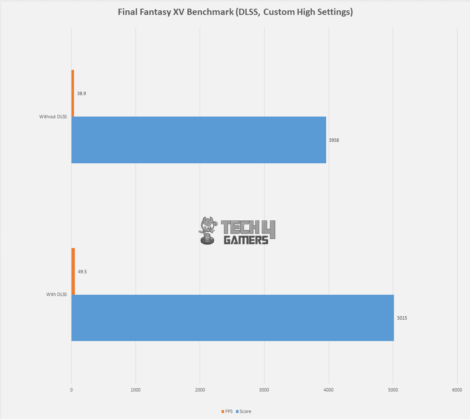
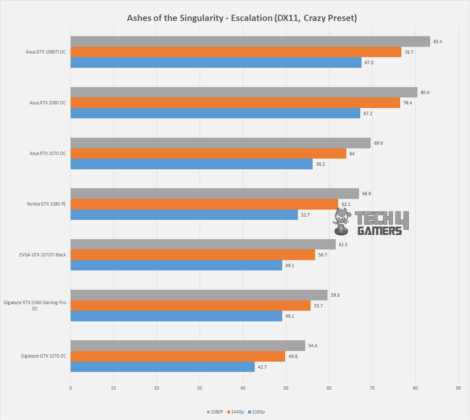
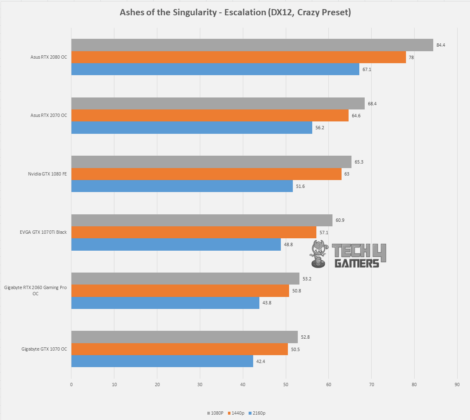
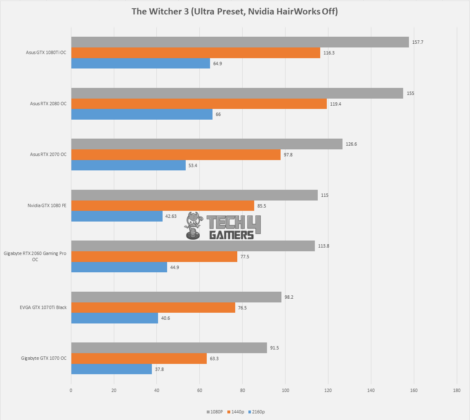
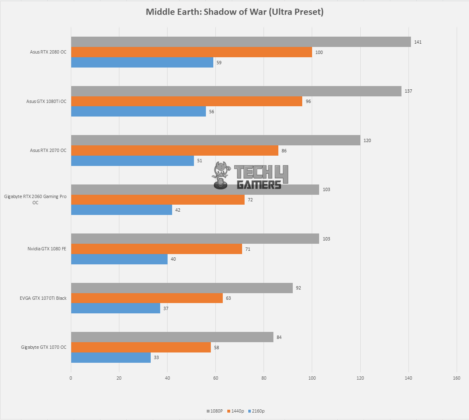
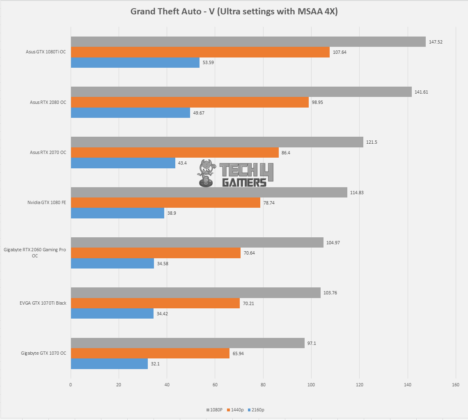
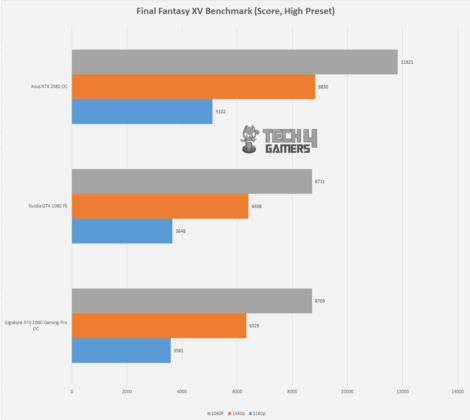
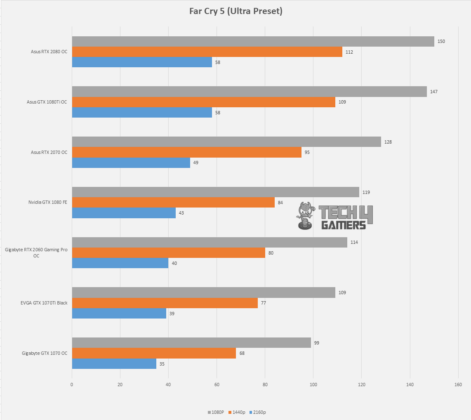
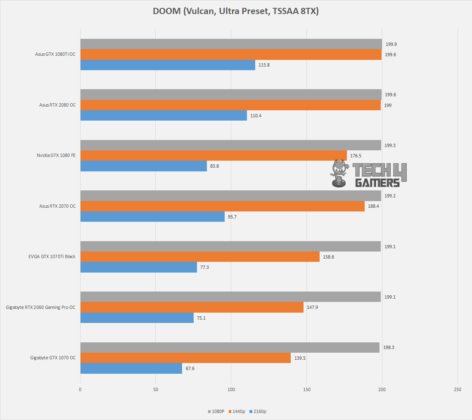
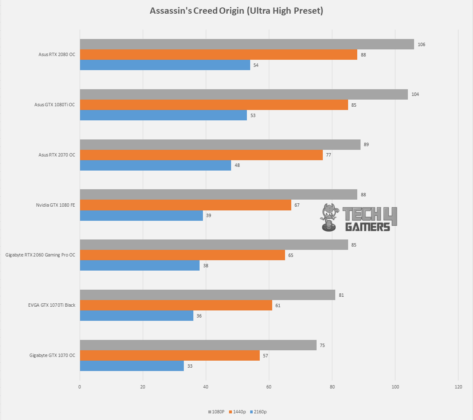
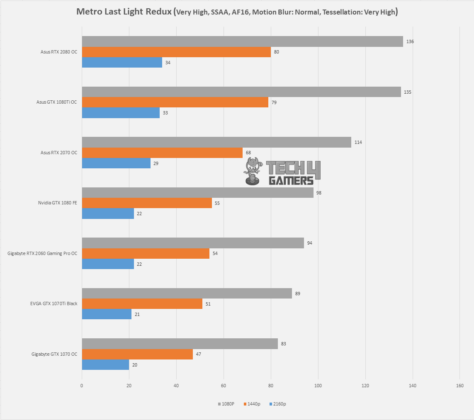
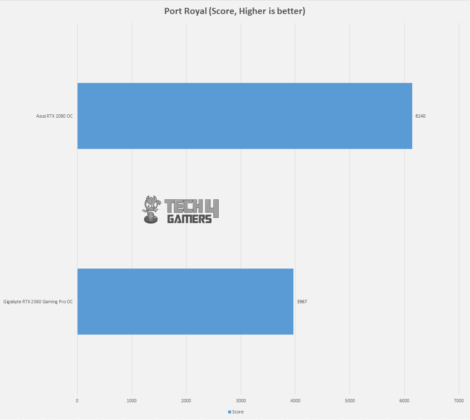
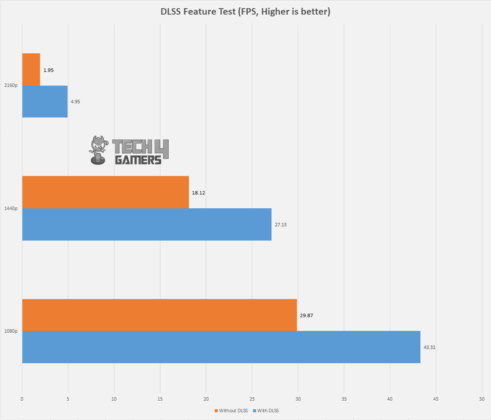
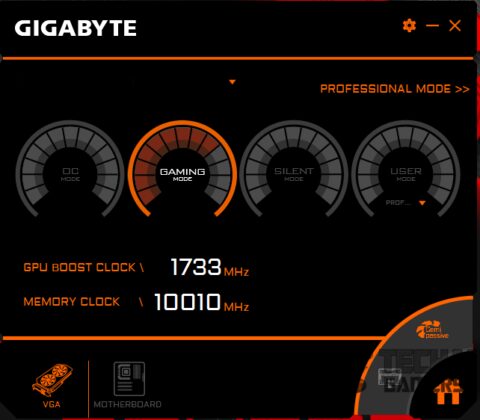
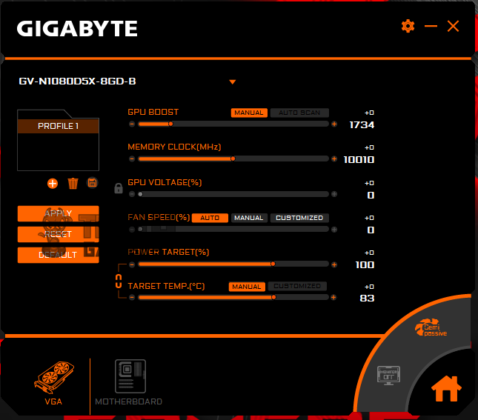
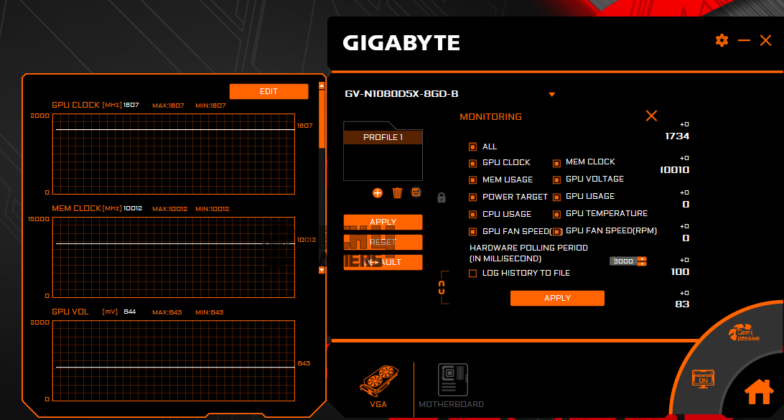
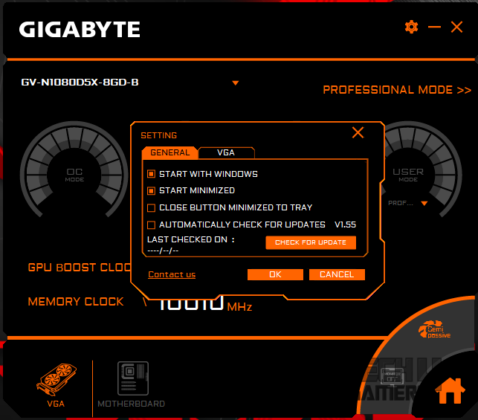
![We’ve Found The Best RTX 3070 Graphics Cards [Our Top Picks] BEST RTX 3070](https://tech4gamers.com/wp-content/uploads/2022/07/best-rtx-3070-218x150.jpg)
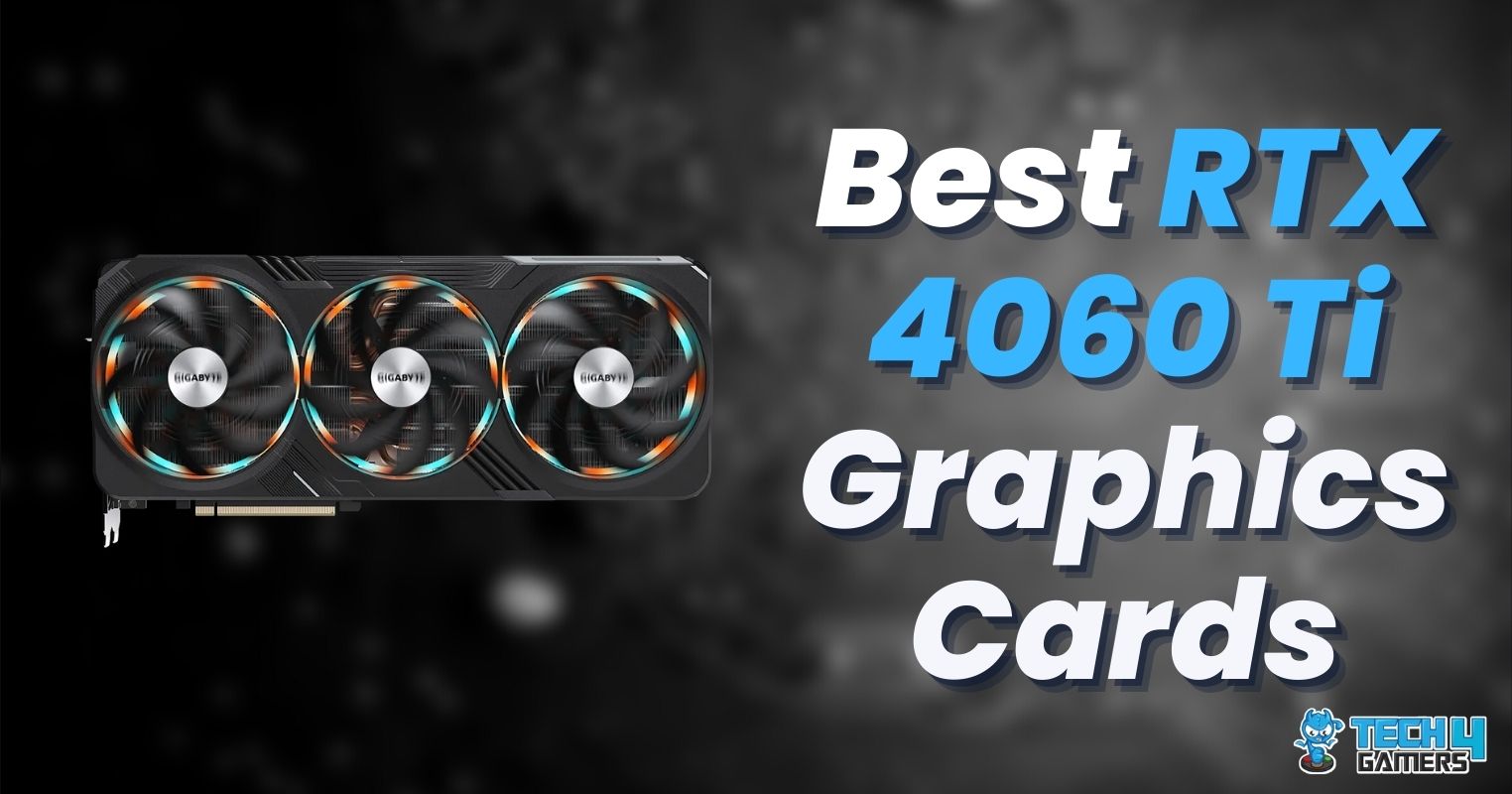
![The BEST RX 7900 XTX Graphics Cards [With Benchmarks] RX 7900 XTX Graphics Cards](https://tech4gamers.com/wp-content/uploads/2022/12/RX-7900-XTX-Graphics-Cards-218x150.jpg)
![The Best GPU For Core i5-14600K [With Benchmarks] Best GPU For i5-14600K](https://tech4gamers.com/wp-content/uploads/2023/10/Best-GPU-For-i5-14600K-218x150.jpg)
